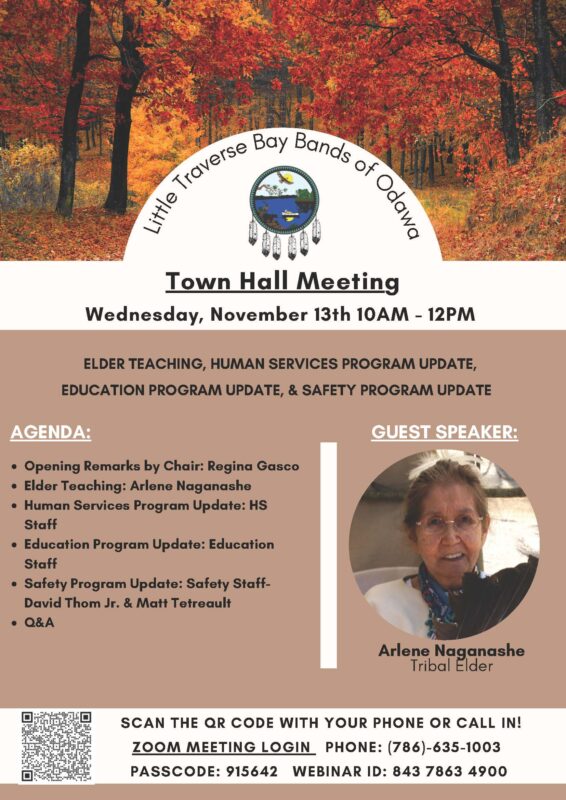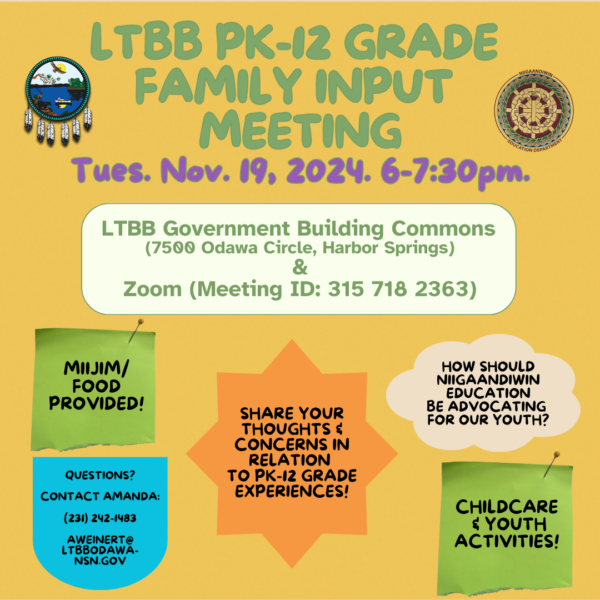General Election: June 28, 2021 Candidates for Tribal Council
RICKY COMPO
TAMARA KIOGIMA
LEROY SHOMIN
DOUG EMERY
WILLIAM ORTIZ
MARCI REYES
KENNETH DEWEY
AARON OTTO
SHARON SIERZPUTOWSKI
SIERRA BODA (WITHDREW 5-14-21)
LTBB has focused our work around the LTBB reservation and Tribal citizens—this makes our guidelines more updated and more specific to you. Going out of town? You can find other water bodies not in our study at Michigan’s Eat Safe Fish Guide at www.michigan.gov/eatsafefish . If you don’t see your fish/lake on either guide, you can eat to your heart’s content.
Less than half of our survey-takers were familiar with fish advisories, which means we will make an effort to increase this number. We also found out that availability, accessibility, affordability, and environmental concerns are some of the main reasons why people change how much fish they eat. We plan to do more education about fishing, cleaning fish, cooking fish, and where to get fish to help make it more available. We will continue to monitor water quality and will periodically collect fish tissue for contaminants.
The final goal for this project will be to incorporate a numerical fish consumption rate into tribal water quality standards. These standards are the criteria we use to measure how clean water is. Once approved by Tribal Council and the EPA, we will be able to protect the water against contaminants to ensure that fish are safe to eat for the next seven generations.
There is a notion that a fish advisory means you should eat less fish overall—in reality, you should keep eating fish, just choose different kinds or a different water source. That way you’ll still get the benefits of eating fish without the safety scare. You can use the guide below to find out what fish works for you. For instance, if you’re 20 years old and not planning to be pregnant and you went to Crooked Lake and caught a few walleye and perch, you can have the perch a couple times this week OR the walleye once this week. You could have more walleye next week or perch a few times, but not both. If you were planning to become pregnant, you wouldn’t want to eat walleye again until next month, but you could have perch sooner—like next week! We don’t recommend eating enough to make a “food baby,” but if you slip up and eat too much, know that the contaminants will flush themselves out of your body on their own—they will decrease by half within 50 days. Keep this in mind if you are planning to become pregnant—you will need to start eating fish at amounts safe for infants before the pregnancy starts.
This guide is available in an easy-to-use “spinning” format that is handy for use while you are fishing and boating. Stop by Environmental Services, Natural Resources, or contact our office at 231-242-1572 or ldey@ltbbodawa-nsn.gov to have one sent to you.
RICKY COMPO
TAMARA KIOGIMA
LEROY SHOMIN
DOUG EMERY
WILLIAM ORTIZ
MARCI REYES
KENNETH DEWEY
AARON OTTO
SHARON SIERZPUTOWSKI
SIERRA BODA (WITHDREW 5-14-21)
BERNADECE (BERNIE) BODA & LINDA GOKEE
REGINA GASCO-BENTLEY & STELLA KAY
(Click Team To Read Their Statements)
BERNADECE (BERNIE) BODA & LINDA GOKEE
REGINA GASCO-BENTLEY & STELLA KAY
(Click Candidate Name To View Their Statement)
Search Code Index
function search(string){ window.find(string); }
LTBB Events
Sun Mon Tue Wed Thu Fri Sat 

Contact SPRING
[ninja_form id=12]
https://app.hellosign.com/s/LJki90VA